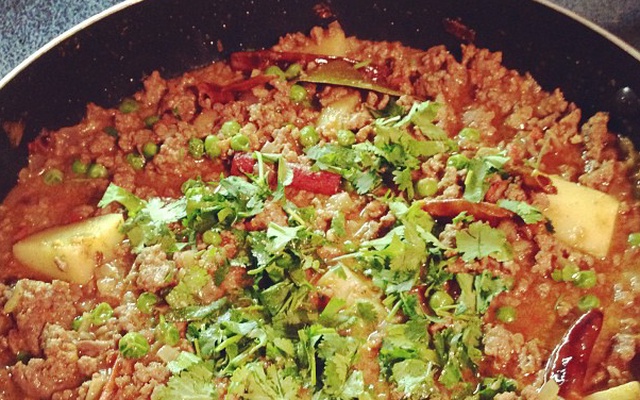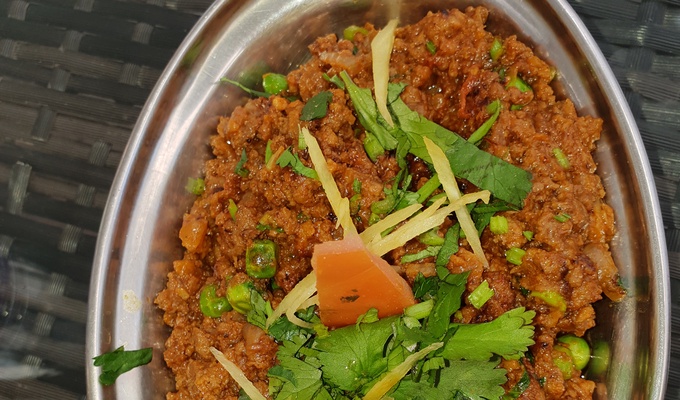Kheema (also spelled keema) is a minced meat dish originating in the Indian subcontinent, particularly from Mughal culinary traditions. The term "kheema" is derived from the Turkish word "qıyma," meaning "minced meat," reflecting the dish's likely introduction to the region during the Mughal era. Typically made from lamb, goat, beef, or chicken, the meat is sautéed with ingredients like onions, tomatoes, ginger, garlic, and spices such as cumin, coriander, and garam masala. Variations of the dish include keema matar (with peas) or versions with potatoes or eggs.
Kheema is culturally significant across the subcontinent, often associated with Muslim communities, particularly during Eid al-Adha, when it is prepared with freshly available meat. In Hindu communities, the dish is more commonly made with chicken or goat due to religious prohibitions on beef. The preparation method and spices vary by region, but it is commonly served with naan, roti, or rice.
The dish's influence extends beyond South Asia, with adaptations in East Africa, where Indian laborers brought the dish during the colonial period. In Mumbai, keema pav — minced meat served with soft bread rolls — has become a popular street food. In global contexts, particularly the United Kingdom, kheema is a staple in Indian restaurants and has been adapted into various curry dishes. In Macau, kheema with potatoes was influenced by English "mince" to become minchi.

